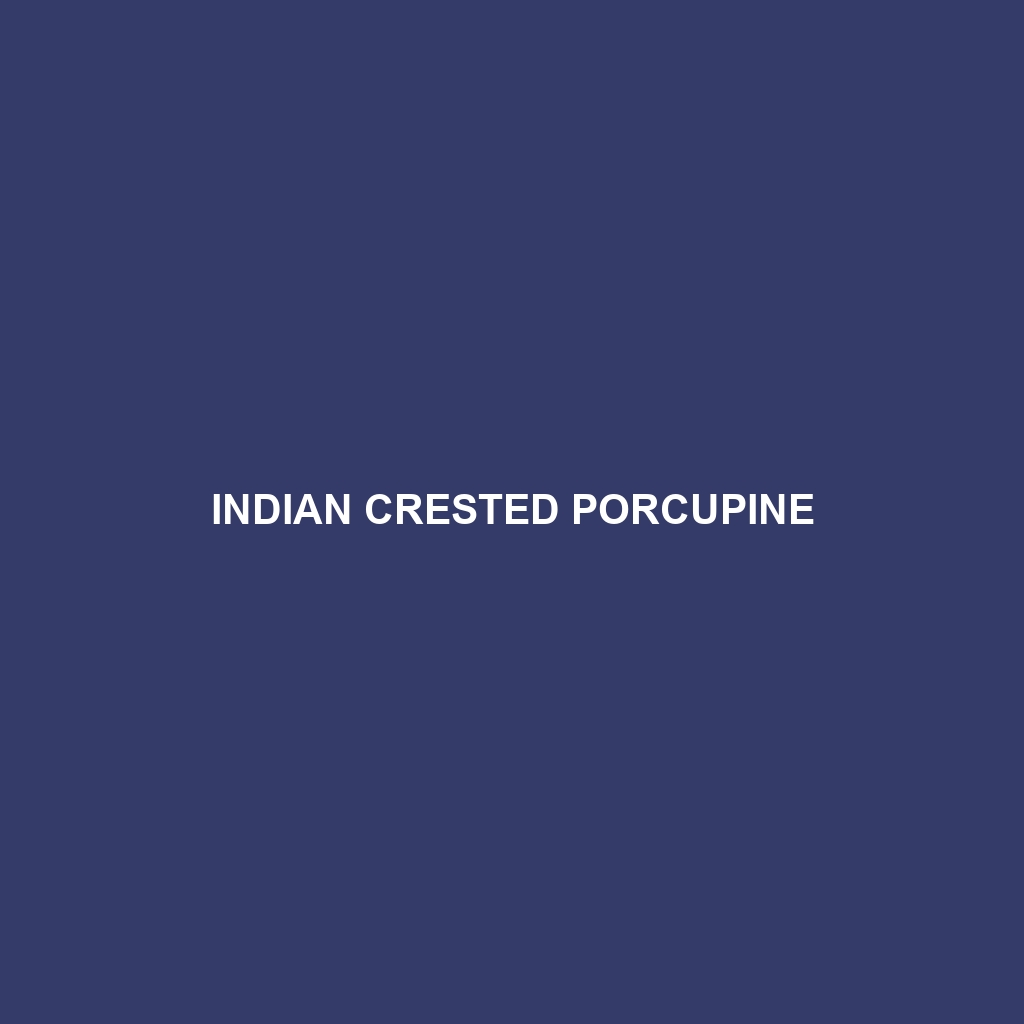Indian Crested Porcupine
Common Name: Indian Crested Porcupine
Scientific Name: Hystrix indica
Habitat: The Indian Crested Porcupine is primarily found in the subcontinent of India and can also inhabit regions of Nepal, Sri Lanka, and Pakistan. They favor diverse environments, including forests, grasslands, and scrublands, often found at elevations up to 2,000 meters. Their adaptability allows them to thrive in both dry and moist habitats, seeking areas with ample cover and food sources.
Physical Characteristics: Indian Crested Porcupines are robust rodents with an average length of 60 to 80 cm (24 to 31 inches) and weigh between 10 to 30 kg (22 to 66 lbs). They are characterized by their distinctive quills, which can grow up to 30 cm (12 inches) and offer significant protection against predators. Their fur is typically a mix of black and brown, with lighter patches that enhance their camouflage in natural habitats. The crest of long, hair-like spines on their back is particularly notable, making them easily identifiable.
Behavior: Known for their nocturnal habits, Indian Crested Porcupines are primarily active at night. They exhibit solitary behavior, but can occasionally be found in pairs. These porcupines are excellent diggers, using their strong claws to create burrows for shelter and nesting. Additionally, they are known to produce a variety of vocalizations, including grunts and growls, which play a role in communication during mating rituals and territorial disputes.
Diet: The Indian Crested Porcupine is an herbivorous creature that primarily feeds on a diet of roots, tubers, fruits, and bark. Their strong teeth are adapted for gnawing through tough vegetation. They are also known to consume carrion, which can attract attention to their scavenging behavior. Interestingly, these porcupines can adapt their feeding habits based on seasonal availability, showcasing their resourcefulness.
Reproduction: Indian Crested Porcupines typically breed once a year, with mating occurring during the rainy season. The gestation period lasts around 90 to 112 days, after which females give birth to one to four young, known as pups. These pups are born with their eyes open and immediately begin to grow quills, making them relatively independent soon after birth. Parental care lasts for several months, during which the mother protects and nurtures the young until they are ready to venture on their own.
Conservation Status: The Indian Crested Porcupine is currently classified as “Least Concern” by the International Union for Conservation of Nature (IUCN). However, habitat loss and hunting pose ongoing threats to their populations in certain regions. Conservation efforts focus on habitat protection to ensure stable populations for future generations.
Interesting Facts: One fascinating aspect of the Indian Crested Porcupine’s defense mechanism involves their quills. Unlike many animals that can simply release their quills, porcupines cannot throw them, but they can rattle them to deter potential threats. Additionally, their quills have barbed tips, making them difficult for predators to remove once embedded.
Role in Ecosystem: The Indian Crested Porcupine plays a vital role in its ecosystem by aiding in seed dispersal and soil aeration. As these creatures dig and consume various plant materials, they contribute to the health and regeneration of their habitats. Furthermore, their burrowing activities create homes for other small animals, enhancing biodiversity within their environment.
